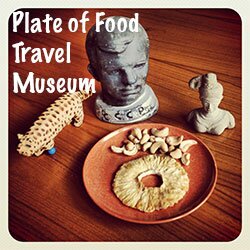A RIDE ON YANGON’S CIRCULAR TRAIN
A British travel photographer I met here – pressing well into his middle ages, but with close-cropped dyed-black hair, and looking like he’d double as Brutus’ cousin in a Popeye cartoon – told me Burma’s like any other ex-British colonial place: ‘As soon as they got in, they’d build a train.’ Yangon’s ‘circular line’ ($1 per ride for foreigners, or 1 cent for locals) is that legacy. The slow-going ride bounces on a long three-hour loop, counter-clockwise or clockwise around Yangon, connecting 25 or so stops used by commuters not willing to shell out the more expensive bus fare (up to 15 or 20 cents). The rails are the 1890 originals. Nice for history buffs, but hard on the butts.
This morning, I went out on a ride with a Yangon friend. We joined a team of commuters – Indian women in saris, Muslem men with turbans and long beards, betel nut-chewing Karen men in skirt-like longyi, vendors carrying (now empty) pots of mohinga (fish noodle soup), sold at morning markets in the center – and rolled out of central Aung San Station at 5mph. The train would slow as it come to frequent stops, then stop briefly, then roll backward slightly, before it pressed on. Out of the center, we passed simple wood huts, canals covered in water cress, and recently planted teak trees: in 15 minutes you feel like you’re in the countryside.
A man in the back of the eighth car – where we stood— asked if we’d like to sit. He carried a green flag he wove out the window at stops. A couple seats sat bare on the packed train, but behind a small cord. VIP section?, I asked my friend. ‘No, it’s for foreigners.’ Despite my inflated ticket price, I wasn’t 100% comfortable with the segregation, so stuck with standing. After 30 minutes we got off at Gyo Gone stop, a couple blocks west of the former ‘Rangoon Institute of Technology’ (that’s right: RIOT), and one stop before reaching the infamous octagonal-shaped Insein Prison. In 1988, students at a teashop across the street from RIOT got into a fistfight over the music playing – one group had a Shan singer Sai Hti Sai on, another wanted something more poppy. The police were called, and when they couldn’t break it up, a student was shot. Things spun out of control. The students merged to protest the shooting, the government backed the police, and students took to the streets in protest, and it soon became something a lot bigger than a fight over music: but a call for democracy, a full year before Tianemmen Square. Afterwards, the government changed the name of the city to Yangon, so that the institute wouldn’t remind anyone of the event: from RIOT to the less explosive YIOT.
My friend took me to the little teashop where a revolution began, a bare concrete-floor spot with a simple roof with faded ads draped down. ‘You shouldn’t have your camera out here,’ he said, untucking his nice white shirt to look ‘less formal.’ ‘People may be watching.’ The shop was closed – being Sunday – so we went on to quickly peek at the former RIOT – a Soviet-built institute from 1964 with overgrown yard and fading gold buildings.
The train could be a great way of getting around town, and stopping to see various sites outside the center, but once you hop off another doesn’t come for ’45 minutes or so.’ We took a cab back.







